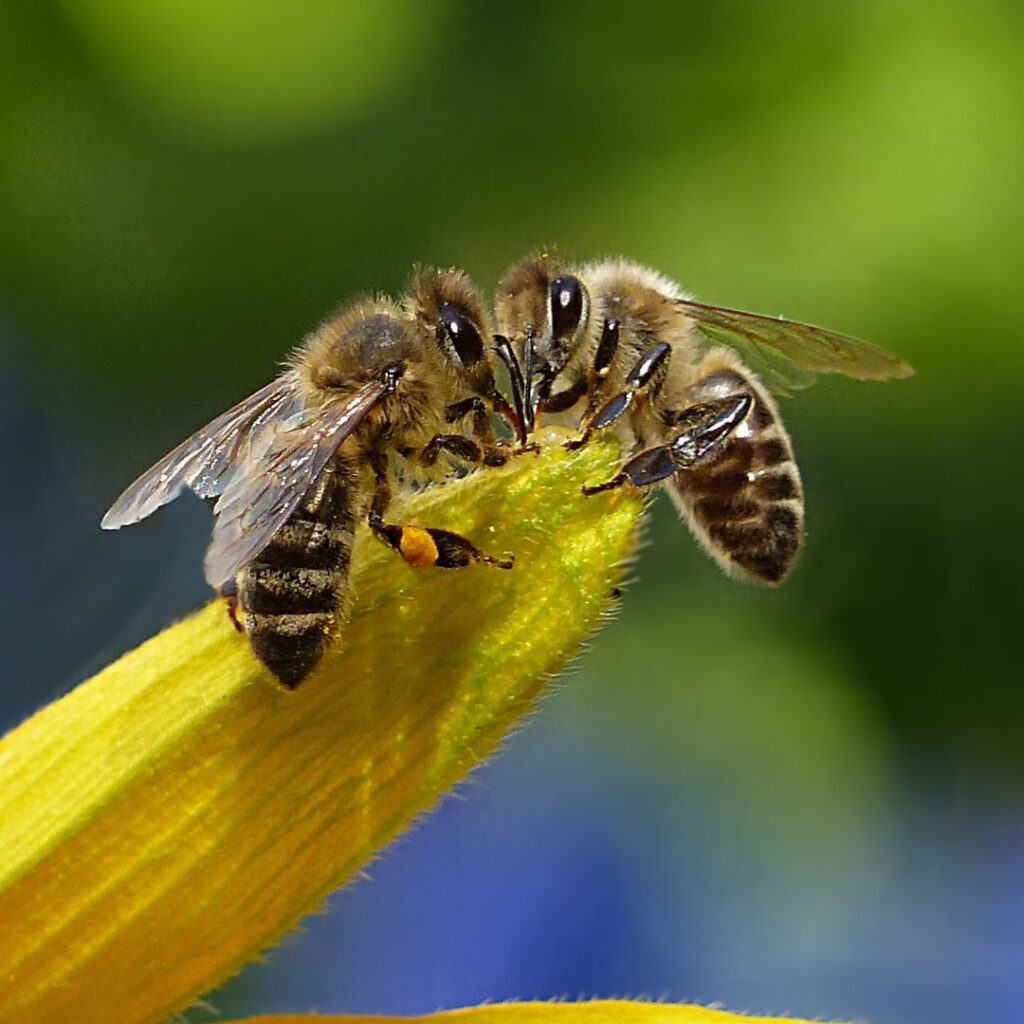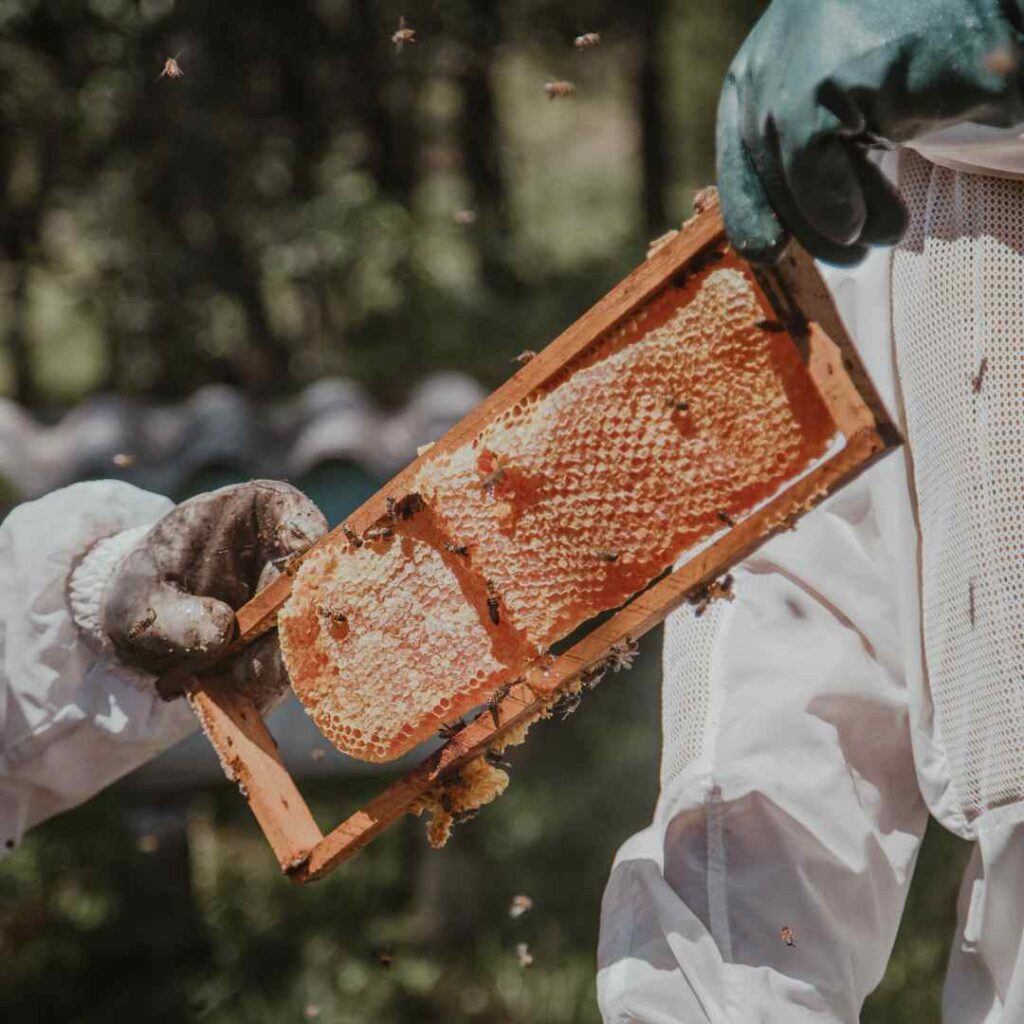How Bees Came to…Bee-1 Interesting Facts you Never Knew!
What do we thing when we spot the bee? When we spot a bee , we probably don’t really question it at all. Even if we question it, we just picture a hive filled with a swarm of bees hard at work making flowers look bright and creating honey for us all. It never really crosses the mind that they’re one of the oldest remnants of a huge expanse of history. Put it this way: they’ve had a lot of experience in the pollinating-and-honey-making field. It’s believed that bees first started showing themselves in the Cretaceous period, living alongside the dinosaurs. Flowers began to bloom around this time millions of years ago, so scientists and historians have assumed that our little flying friends had something to do with it. They didn’t just spawn out of nowhere, though — through their similarities in DNA strands it’s believed that the honey bees we know today evolved from ancient predatory hunting wasps around 130 million years ago, only they thought that a vegetarian lifestyle suited them better, and so moved from eating other insects to pollinating flowers instead. Very clearly a good decision. Bees existed before humans… and survived the dinosaurs While we were still waiting to evolve from our rat-like ancestors, bees were already coming to grips with the new job at hand. They slowly learned to carry pollen from one flower to another which allowed plants to reproduce, creating a rich atmosphere that was able to sustain more life. With time, plants became more elaborate and colourful while bees became more specialised in pollination. Lots grew more hair to help collect and carry pollen, as well as longer tongues to help reach the nectar that the plants produced to help feed young larvae back at the hive. When all dinosaurs went extinct, it’s surprising that bees survived such a cataclysmic event. But they did. Many of the smaller species survived, although there was still a devastating loss of countless life forms. It is thought that bees not only survived, but recovered swiftly, and began to rebuild a beautiful environment that had once been lost. Species that developed as a result of the extinction were smaller, but aptly cared for in a sustainable environment with plenty of oxygen that helped them all developed — and this was largely down to the bees that had pollinated the plants. Animals began to diversify and take advantage of evolving in a new world and spread across its every axis, creating a teeming atmosphere of life. Buzzing alongside our greatest ancestors Buzzing alongside our greatest ancestors. Mammals emerged across the globe and the earliest forms of human life started to develop, closely coming together to look like the people we know today. Many mammals were hunted to extinction by our early ancestors (hence why we don’t see sabre-toothed tigers roaming through the back streets and moors of Yorkshire) in order for our species to survive. We learned to make use of the many animals communities around us to our advantage, and once mankind developed a sweet tooth, bees began to appear even more useful than ever before. In ancient times, we learned to extract honey to satisfy our cravings, which was then used as a sweetener in many things such as food and alcoholic drinks, as well as being utilised for its antiseptic properties and benefitting health in general. Bees had such a huge affect that names like Beckett, Deborah, Melissa and even the famous Beowulf mean bee in English and Irish, Hebrew, Greek and Old English respectively. They had such a huge impact that honey was even used to enable the dead by civilisations in Egypt and the Middle East. By this point, the world of beekeeping had began to emerge as ancient Egyptians realised they could be kept in hives (then called skeps). These very early forms of beekeeping proved quite difficult as it was hard to extract honey without killing the colony. But because of that all- encompassing sweet tooth that we must get from our ancestors before us, love found a way. From skeps came the working, sustainable beehive that we know today. From dinosaurs to local Yorkshire beekeepers 130 million years of bees had led us up to today, in an age where bees are more important than ever before. As industrialisation of agriculture grows, we also see the bee population decline, even after they managed to survive meteors that huge dinosaurs couldn’t. Thousands upon thousands of homes will have a pot of honey sitting on a shelf somewhere, each tablespoon a glimpse into a single lifespan. So we must appreciate bees, and all of the hard work they do for us and our environment. As biologist E.O. Wilson puts it, ‘If all mankind were to disappear, the world would regenerate back to the rich state of equilibrium that existed ten thousand years ago. If insects were to vanish, the environment would collapse into chaos.
How Bees Came to…Bee-1 Interesting Facts you Never Knew! Read More »



